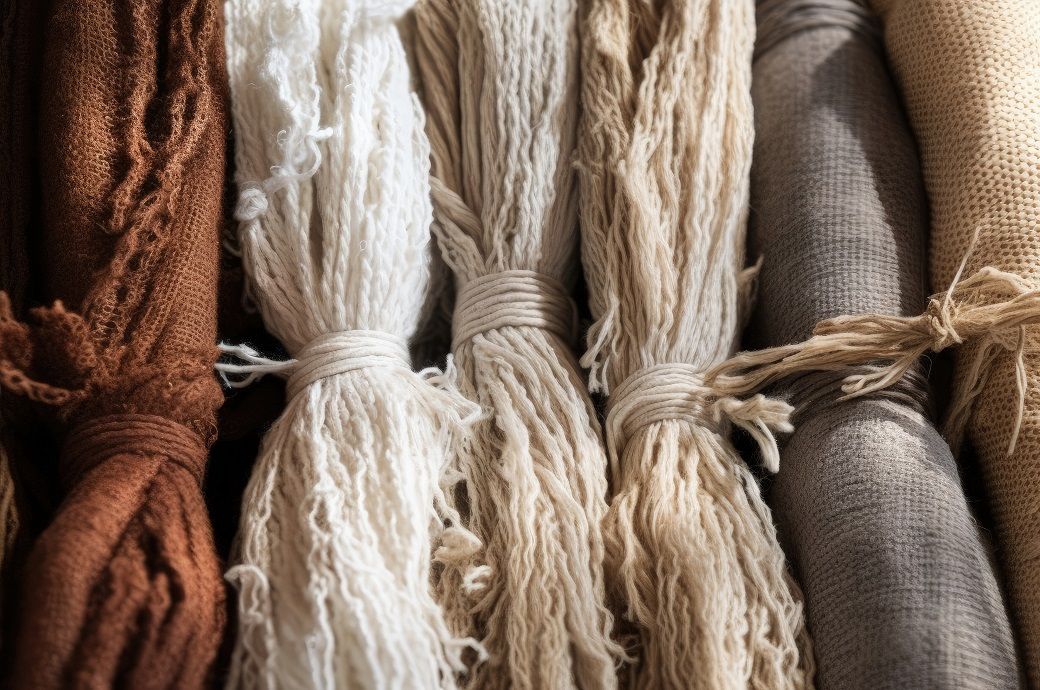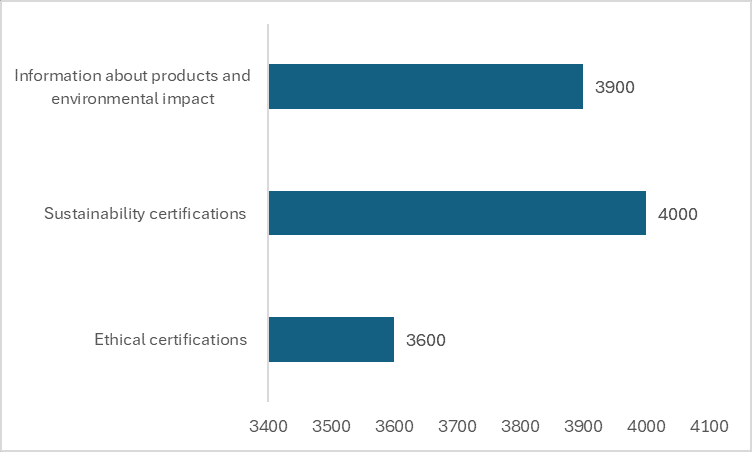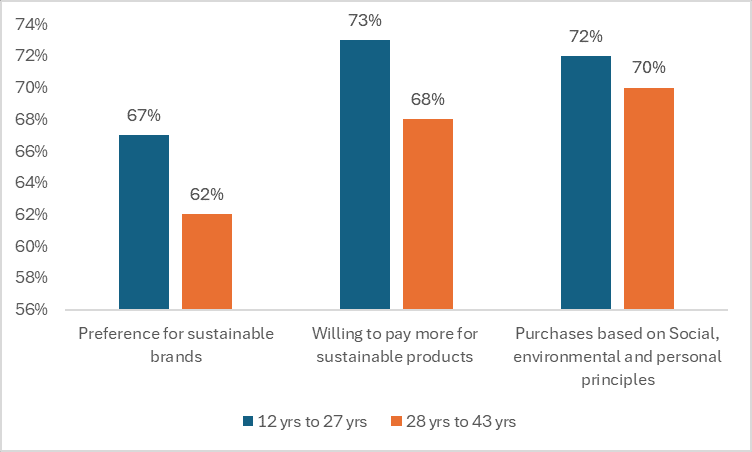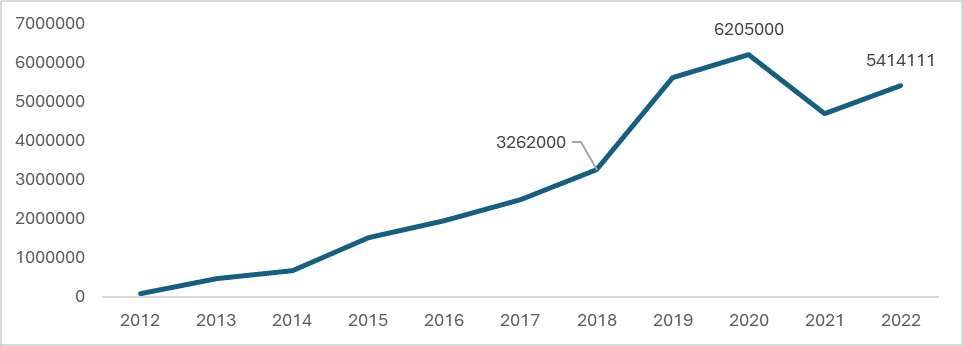
Amid increasing alarm bells regarding sustainability, various synthetic and recycled fibres, such as recycled polyester, have gained ground alongside organic cotton. The new wave was expected to reduce global cotton consumption and eventually increase the consumption of recycled fibres; however, surveys conducted by different organisations indicate otherwise.
We want cotton!
Alongside the call to reduce fibre wastage and switch to more sustainable options like recycled polyester, bamboo viscose, organic cotton, regenerative cotton, and clothes made of jute and hemp, two of the surveys examined revealed contradictory findings. According to a study conducted on Norwegian consumers and their apparel fibre preferences, it was revealed that out of the total population studied, 63 per cent preferred garments made of cotton, while another 34 per cent preferred garments made of organic cotton. Bamboo viscose emerged as another highly preferred fibre, but polyester, despite being widely discussed, saw the lowest preference, followed by recycled polyester. The reason cited was the lower comfort level associated with using those fabrics. Similar results were observed in the Lifestyle Monitor survey, where 73 per cent of consumers expressed a preference for apparel made of cotton and other blends. Both the age group of 35 to 70 and the younger population (age group 13 to 34) showed similarly high preferences.
Awareness about sustainability in retail
With a significant demand for natural fibres evident in various surveys, the question arises: Do people prefer sustainable products or are they aware of sustainable products? This question is addressed in a survey published by Fashion Evolution. Out of the 5,000 people surveyed from different parts of Europe, nearly 3,900 sought information about products and their environmental impact. Approximately 76 per cent were most concerned about the environmental impact of the product, another 80 per cent highly valued sustainability certifications, and approximately 72 per cent were concerned with ethical certifications.
Figure 1: The Survey snapshot of certain sustainability criteria

Source: Fashion Evolution Survey, 2020
The consumers were also concerned about the pricing of the apparel they preferred to buy, along with the sustainability criteria. In a comparative study conducted between consumers in China and Canada, respondents highlighted price as an important variable, in addition to the sustainability of clothing and market trends.
Another study by the same organisation, which involved over 1,000 participants, showed that younger generations, aged 18 to 29, are more inclined towards purchasing apparel from sustainable brands, being willing to pay more for products, and making purchases based on values such as ethical certifications, social principles, and moral standards.
Figure 2: Age group-wise preferences in various sustainability principles

Source: First Insight survey
Another survey by BazaarVoice reflected a concerning picture. According to the survey results, in the year 2023, there was a decline of 12 per cent in the importance of sustainability when purchasing clothes. Additionally, 40 per cent of the respondents do not pay attention to the type of brand or the environmental regulations it follows. The awareness and willingness to buy clothes from sustainable brands are higher in the age group of 18 to 34 years.
Retailers tales:
As consumers show an increasing inclination towards natural fibres, a survey showed an increasing gap between retailers and consumers in their perception regarding sustainability and brand image. In a survey conducted by the Wharton Business School and First Insight, where half of the consumers believed that sustainability is more important when buying apparel, most retailers feel that consumers value brand names more than sustainability and related criteria.
A significant lacuna also exists in how retailers perceive consumer mentality about their sustainability efforts. The survey revealed that out of all the retailers surveyed, all of them had the same view that consumers were not satisfied with their transparency efforts, whereas the survey revealed that almost 60 per cent were more satisfied with their efforts. This also points out the lack of a proper and trustworthy feedback mechanism in place which can help to reduce this huge perception gap and improve the supply chain and the value chain.
Production of organic cotton
Considering the demand for cotton and the current sustainability scenario, cotton production remains stagnant. Despite various organisations globally beginning to produce organic cotton, the production of this ‘white gold’ stagnates alongside the demand for it. Consumer surveys indicate a higher preference for natural fibres. As consumer sentiment improves in 2024, a higher demand for apparel will also lead to a higher demand for cotton.
Figure 3: Organic cotton production (in mn tonnes):

Source: Better Cotton Initiative (BCI)
On the other hand, the production of organic cotton is also increasing. With different organisations like the BCI supporting farmers across countries, the production of organic cotton is increasing annually. According to the BCI, organic cotton production is set to increase, indicating the willingness of farmers to shift to a more sustainable option.
Therefore, even though natural fibre is the primary choice of consumers, there are other alternatives to conventional cotton already in existence to ensure that this choice is catered to as we maintain ecological balance. Additionally, there are technological innovations aimed at ensuring that the remainder of the value chain is also more sustainable and greener.
Just a glimpse
The consumer preferences outlined above paint a mixed picture regarding actual awareness of sustainability and preferences regarding sustainable apparel. Although the surveys are from different parts of the US, Europe, and Asia, they point towards one thing—there is a dire need to not only diversify more into other types of fibres but also spread more awareness about alternative options and make them more affordable for consumers. The actual perception gap between retailers and consumers can only be reduced by implementing a system where proper feedback mechanisms are in place. These surveys also offer insight into consumer perceptions regarding various types of fibres and pave the way for innovation and further research to ensure better alternatives are created for a more sustainable and environmentally friendly fashion industry.
ALCHEMPro News Desk (KL)
Receive daily prices and market insights straight to your inbox. Subscribe to AlchemPro Weekly!